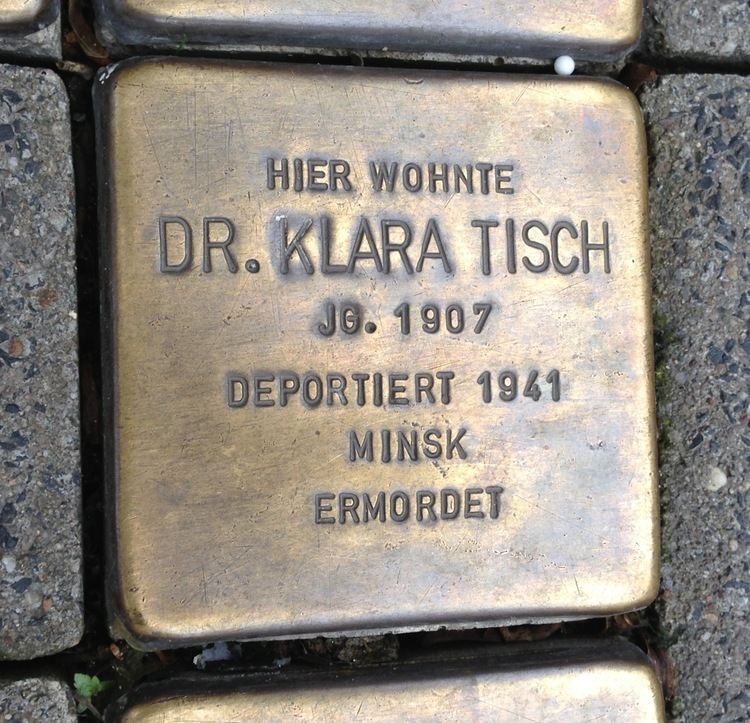Name Clare Tisch | ||
 | ||
Cläre Tisch, also "Kläre Tisch" or "Klara Tisch," (* January 14, 1907 in Elberfeld (today: Wuppertal); † (lost) November 1941 in Minsk, Belarus) was a German economist.
Contents
Life
She was the daughter of the Elberfeld merchant Leo Tisch and his wife Adele. She first went to school at Lyzeum West in Elberfeld, later to the "Realgymnasiale Studienanstalt in Unterbarmen." From 1926 she studied economics in Bonn, Genf, Berlin and finally again in Bonn. In Bonn, her teachers were Arthur Spiethoff, Herbert von Beckerath and Joseph Schumpeter, under whose guidance she received her Ph.D. with a thesis on the Socialist calculation debate which got much attention in the scientific community. Schumpeter supported her later when he was professor in Harvard and exchanged letters with her until her deportation. The thesis of the 24-year-old is considered as an "influential" (McCraw) and a "remarkable achievement" (Hagemann) and makes her a forerunner of the "neoclassical socialists" like Henry D. Dickinson, Oskar Lange and Abba Lerner. Friedrich August Hayek would cite her work as well as Schumpeter in his book „Capitalism, Socialism and Democracy“ (1942). Up to 1933 Cläre Tisch worked as a scientist; in addition she was assistant to Arthur Spiethoff.
Due to Nazi anti-Jewish policies, she was forced to leave the university; she took on various jobs in the private sector.
In 1936 she became the principal of the adoption organization for the Jewish Women Organization in Wuppertal-Elberfeld. She turned down various opportunities to leave Germany probably because of her desire to help the children. Schumpeter had provided an affidavit for her in order to facilitate her emigration to the United States.
On November 10, 1941, Cläre Tisch was deported together with her sisters Marie and Gerda, her brother-in-law Leo Marcus, and her niece Arnhild Marcus in a group of 992 Jewish co-citizens from Wuppertal, Düsseldorf, and Essen to the ghetto in Minsk, where she was murdered very likely in 1942 or 1943.
In front of the house in Wuppertal's Neumarktstraße 46, where she used to live, a so-called "stumbling block" is a memorial to her. She is also featured in the permanent exhibition of the Old Synagogue Center in Wuppertal.
